Editor's Note: This post was originally published in July 2017 and has been updated for accuracy and comprehensiveness.
What is omnichannel retail?
Omnichannel retail doesn’t require you to be everywhere, just everywhere your customers are. This distinction is what separates top-performing enterprises from the rest.
Omnichannel retailing is a fully-integrated approach to commerce, providing shoppers a unified experience across all channels or touchpoints.
True omnichannel shopping goes beyond brick-and-mortar locations to mobile-browsing, online marketplaces, social media, and wherever your users browse online through retargeting ads.
Customers spend more on brands with a smart omnichannel strategy. So why are only 22% of retailers making omnichannel a top priority? It may be that it’s easier to measure single variables like efforts focused exclusively on mobile, marketing, or merchandising strategies. But integrating all of these touchpoints into a holistic omnichannel approach is the only way to fully realize the full potential of each touchpoint.
In this post, we’ll show you exactly how to do this.
- What is omnichannel retail?
- How omnichannel shopping could be
- Why omnichannel retail
- Why is everywhere commerce so valuable?
- How to create immersive experiences with omnichannel
- What omnichannel shopping feels like
- Omnichannel retailing will help you unlock growth
Conceptually, omnichannel is rather simple—the whole is greater than the sum of its parts. Omnichannel involves integrating each touchpoint to offer the customer exactly what they need, the moment they need it, anywhere they are, and on any device. What’s complex is executing in both the digital and physical worlds simultaneously.
Nearly 80% of retailers admit they’re failing to offer customers a unified brand experience. Of those that are trying, nearly half say they’re not moving fast enough. Unfortunately, many brands are falling behind. Here are the top reasons why:
- Lack of internal organization (39%)
- Lack of customer analytics across channels (67%)
- Siloed organization (48%)
- Poor data quality (45%)
- Inability to identify customers across shopping trips (45%)
Overcoming these obstacles starts with envisioning your omnichannel future.
Learn more: Omnichannel vs. multichannel
How omnichannel shopping could be
Omnichannel is consistent, yet unique. It’s about allowing consumers to purchase wherever they are while communicating in a way that is in tune with why they use a given channel and showing awareness of their stage in the customer lifecycle.
Here’s how an omnichannel customer experience might look:
- A customer discovers and buys from you on Amazon.
- They receive a tailored-for-Amazon unboxing experience, with inserts that promote inventory not found on Amazon along with a discount, information about your loyalty program, your retail experiences (i.e store or popup) and a URL to a dedicated collection page on your site.
- The landing page triggers tracking codes that will later retarget the customer with ads about complementary products to their original purchase on Facebook, Pinterest, and on Google.
- After the second purchase, the customer receives an email notifying them of a nearby retail storefront or event.
- Before your next pop-up, loyal customers are sent a link to a private collection and invited to an exclusive, members-only VIP lounge via Facebook Messenger
This omnichannel user journey leverages information about one sales channel to invite the customer to participate in another. Those actions feel native to the given channel rather than forced or contrived.
Done well, buyers seamlessly transition from one channel to the next, blissfully falling deeper into the brand experience.

To experience omnichannel commerce for real, consider engaging with Pura Vida Bracelets, a fast-growing maker of handmade string bracelets and accessories. While the company is a digitally-native vertical brand (DNVB), founders Griffin Thall and Paul Goodman have used an omnichannel approach to bridge the digital and physical worlds.
Pura Vida’s target customers frequent Facebook (1.8 million fans) and Instagram (1.8 million followers) where they’re treated to high-quality lifestyle and product photography like this:
Intrigued, shoppers can click through to visit the company’s online store, which immediately offers incentives to purchase:
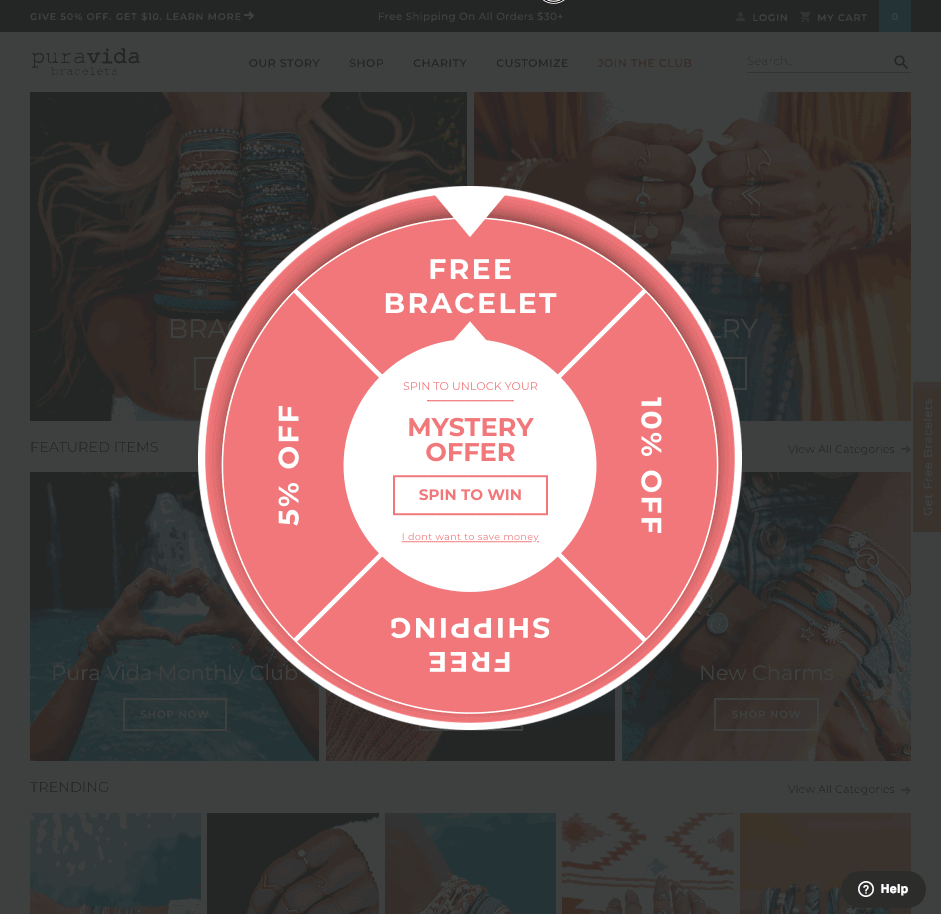
Shoppers who choose to opt into the company’s email list give Pura Vida a new channel and opportunity to market its charitable mission, new product announcements, and sales:

Customers are then targeted across channels to experience Pura Vida in-person at events like the company’s pop-up airstream trailer events that include food, drinks, and music:

Brand evangelists, or micro-influencers as the company calls them, can also expect an invitation to the company’s ambassador program in which they can earn free merchandise by telling the Pura Vida story via online and offline channels with kits like this:
To Thall and the Pura Vida team, executing an omnichannel customer experience is similar to cooking.
“It’s a lot like the ingredients to a great recipe,” Thall says. “Each of the ingredients might taste great on their own, but when you blend them they combine to create a much more delicious dish and ultimately a better experience for everyone.”
Learn more from ten of the best omnichannel brands here.
Why omnichannel retail?
This all sounds great, but the vast majority of retailers don’t have a unified brand experience like this. If you’ve fallen behind, consider this—consumers are already shopping omnichannel. Nearly 75% of shoppers say they use multiple channels to compare prices, hunt for discounts, or use in-store tablets to shop online.
Even more important, omnichannel customers spend 4% more on every shopping occasion in-store, and 10% more online than single-channel customers.
The more channels a customer uses, the more they spend.
This research echoes a report by IDC Retail Insights which found retailers using omnichannel marketing strategies saw a 15–35% increase in average transaction size, a 5–10% increase in loyal customers’ profitability, and 30% higher lifetime value than those who shop using only one channel.
This is also reflective of the broader shift in consumer’s shopping habits, particularly in younger shoppers.
The data is consistent with other research that suggests an omnichannel approach results in:
- A 9.5% year-over-year increase in annual revenue
- A 7.5% year-over-year decrease in cost per customer contact
- An 89% customer retention rate vs. 33% for companies with weak omnichannel customer engagement
The opportunity is even more promising for those who master the art of blending online and offline shopping.
Why is omnichannel commerce so valuable?
While media consumption by U.S. consumers is relatively flat at 10.5 hours per day, new channels are competing for and stealing attention once devoted to other channels:
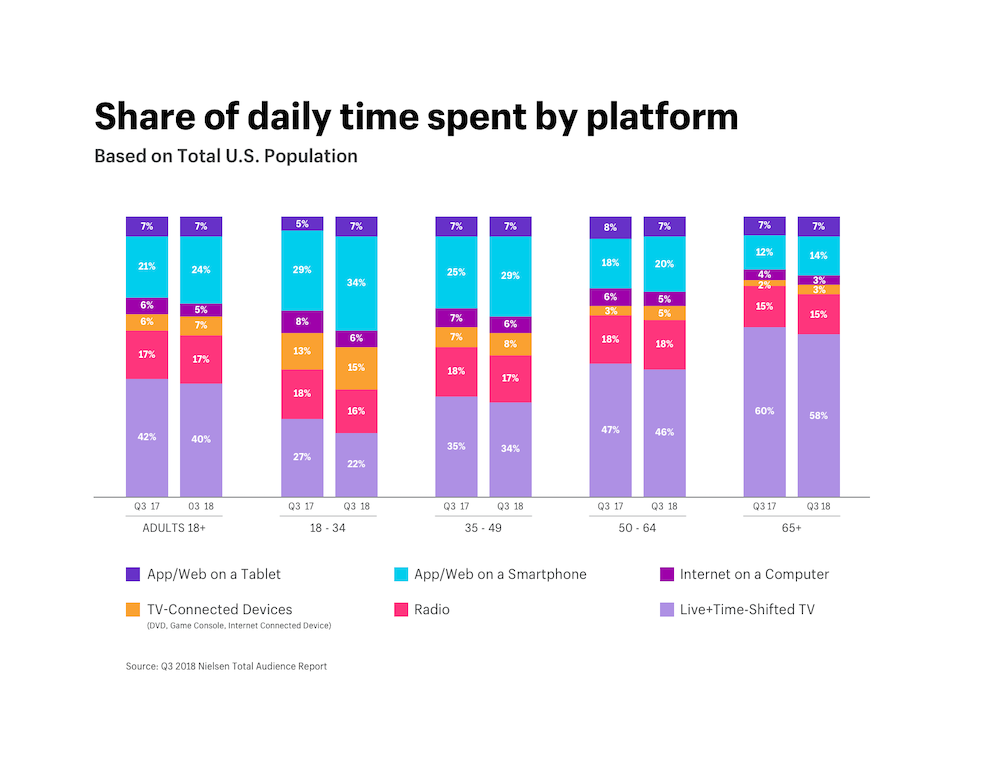
Image from Nielsen
Part of an omnichannel strategy is being flexible. New channels emerge and steal attention from incumbent channels. It’s why brands with robust omnichannel strategies often rely on a headless commerce architecture, which allows brands to flexibly offer commerce anywhere customers are.
Besides positioning brands to use new channels to acquire customers, omnichannel also better positions brands to deepen relationships with existing customers. Remember, omnichannel customers spend more especially when the effort is used as part of an intentional customer retention strategy.
Omnichannel is a customer retention lynchpin; inspiring customers to make repeat purchases quicker, increasing customer loyalty, and lifting the lifetime value of your customers.
Integrating new channels to capture the customer’s attention is the first step. You must also be able to personalize the customer experience across channels. This is a key differentiator for brands offering immersive experiences that accelerate growth.
How to create immersive experiences with omnichannel
With new screens and channels emerging, it’s tempting to think that you must be everywhere. Resist the urge. Remember, efficiently executing an omnichannel strategy requires only that you’re everywhere your customers are.
Done well, the result is the perception that your brand is omnipresent. Your advertising, public relations, SEO, and commerce offerings overlap to form a branded and blended experience. Do this by focusing on:
- Online “discovery” touchpoints
- Geographic locations
- Devices being used
Where people discover new brands
Increase your visibility in the places your target market discovers new brands:

Where many brand marketers might look at those survey results and ask, “How can I reach the most people on X, Y, and Z channel,” the omnichannel marketer looks and asks, “How do these channels overlap?”
Identify where your target market is spending time and attention and insert your brand at the intersections of those properties. For example, invite admirers of a product touted on Instagram to a Facebook Live stream offering a product demonstration.
With this in mind, the omnichannel marketer can create powerful cross-channel retargeting campaigns. Especially after a shopper abandons their cart, earn trust by telling a compelling story with different ad formats (across multiple channels) that illustrates what it’s like to purchase from you.
This how you become omnipresent—not only are you increasing awareness, but leveraging the trust your target market already has for the channel in which you’re engaging.
What omnichannel shopping feels like
When a shopper visits a product page offered by Mission Workshop, a leader in the weatherproof bag and technical apparel space, the shopper can expect something similar to the following omnichannel retargeting sequence:
Day 1
The focus is on high-level benefits of the duffle bag, The Cadre 26.
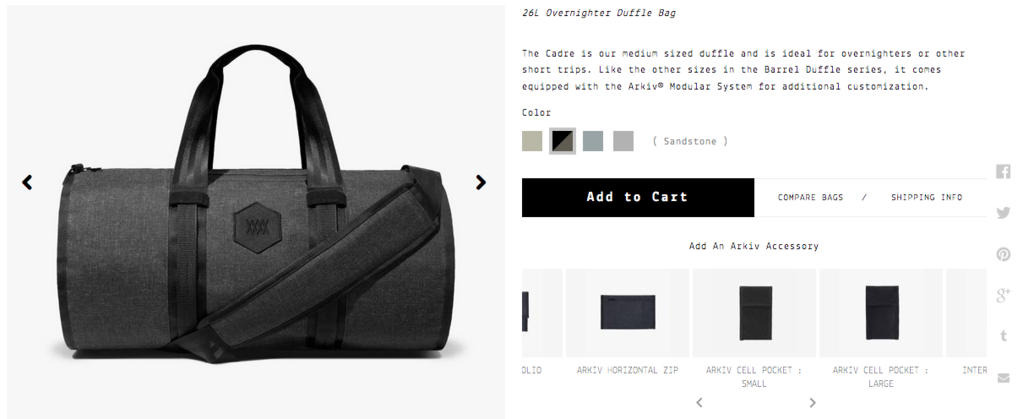
Image from Mission Workshop
Before seeing an ad, the shopper may not have even known the name of the duffel bag he had recently viewed. In fact, the shopper may have seen the $235 price tag and left the site without learning anything about the durability of the bag or the lifetime guarantee.
Later, as the shopper browses Instagram on his phone, he sees this image which is more focused on the lifestyle behind the brand.
The Day 1 retargeting exposes the shopper to more information about the brand and product throughout multiple touchpoints without forcing him to visit the website again. The ads aim to educate instead of pressuring the shopper to make a purchase.
Day 2
The messaging evolves and exposes the shopper to new media formats, layers, and brand offerings. The retargeting sequence might include a video of the bag in action while the shopper is on Facebook.

It might be followed by a pre-roll ad for a product review while the shopper is browsing YouTube bag reviews.
Day 3
Rather than exclusively promoting the higher-priced bag, the brand might use Facebook’s Product Collection Unit to highlight the other product categories they sell.
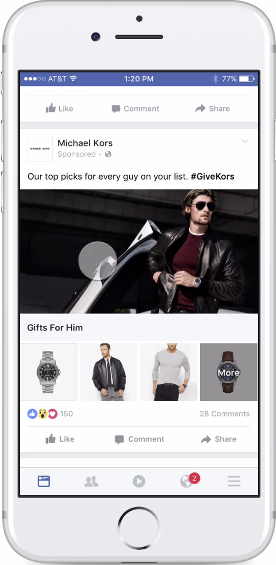
While browsing the web, the shopper might see retargeting ads featuring the same products found in the featured collection area. This creates consistency across channels and familiarizes the shopper with the brand’s offerings.
Day 4
The shopper may see Facebook advertising prompting him to visit a local retail partner or offering a free consultation with a stylist.
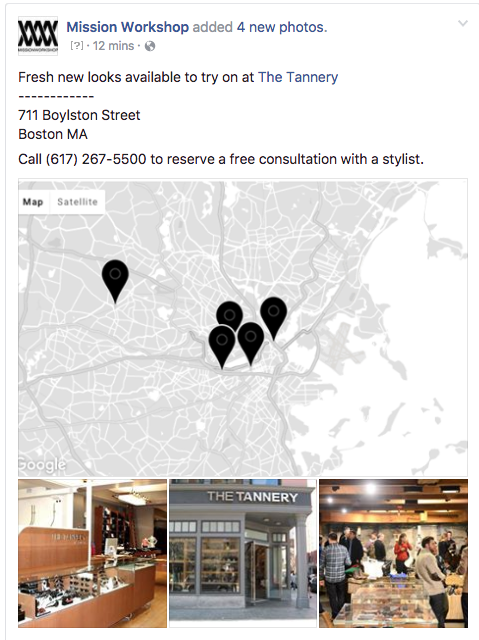
Following the consultation with the stylist, the shopper makes a purchase. The stylist follows up with an email inviting the customer to an upcoming Mission Workshop trunk show. To attend the show, the customer must create an account to register on the business’ site.
The customer’s profile is entered into the company’s CRM and segmented for future marketing. Over four days and eight touchpoints, Mission Workshop executes an omnichannel strategy that educates the shopper on:
- The product mix
- The guarantees
- The reviews
- Where to engage with the brand in person
The messaging is channel-relevant, moves the shopper down-funnel, and converts the shopper by bridging the digital and physical worlds.
Omnichannel retailing will help you unlock growth
The pressure to keep up is growing. Amazon and Walmart are increasingly becoming prime retail omnichannel examples. Like they did with two-day shipping and everyday low prices, these titans will reset customer expectations. You’ll be expected to exceed, or at least meet those expectations.
Single-channel retail, marketing, and merchandising may one day be obsolete.
Unlock new channels for growth and future-proof your business with an omnichannel approach.






